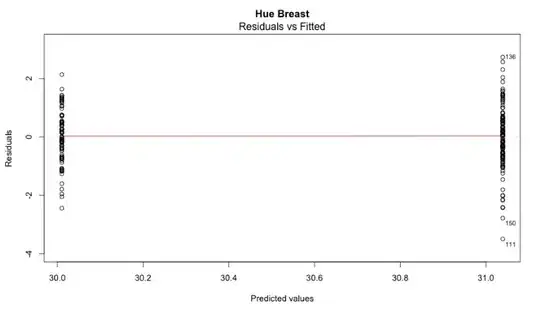I have ran a simple regression with a continuous response variable and a categorical explanatory variable (with 2 levels). I am currently checking that the model meets the assumptions of regression. I produced the following plot:

I'm aware that I need to check that the residuals are normally distributed. Do I need to check the distribution of residuals at each of the 2 levels of the explanatory variable? Or do I need to check the distribution of all residuals simultaneously?